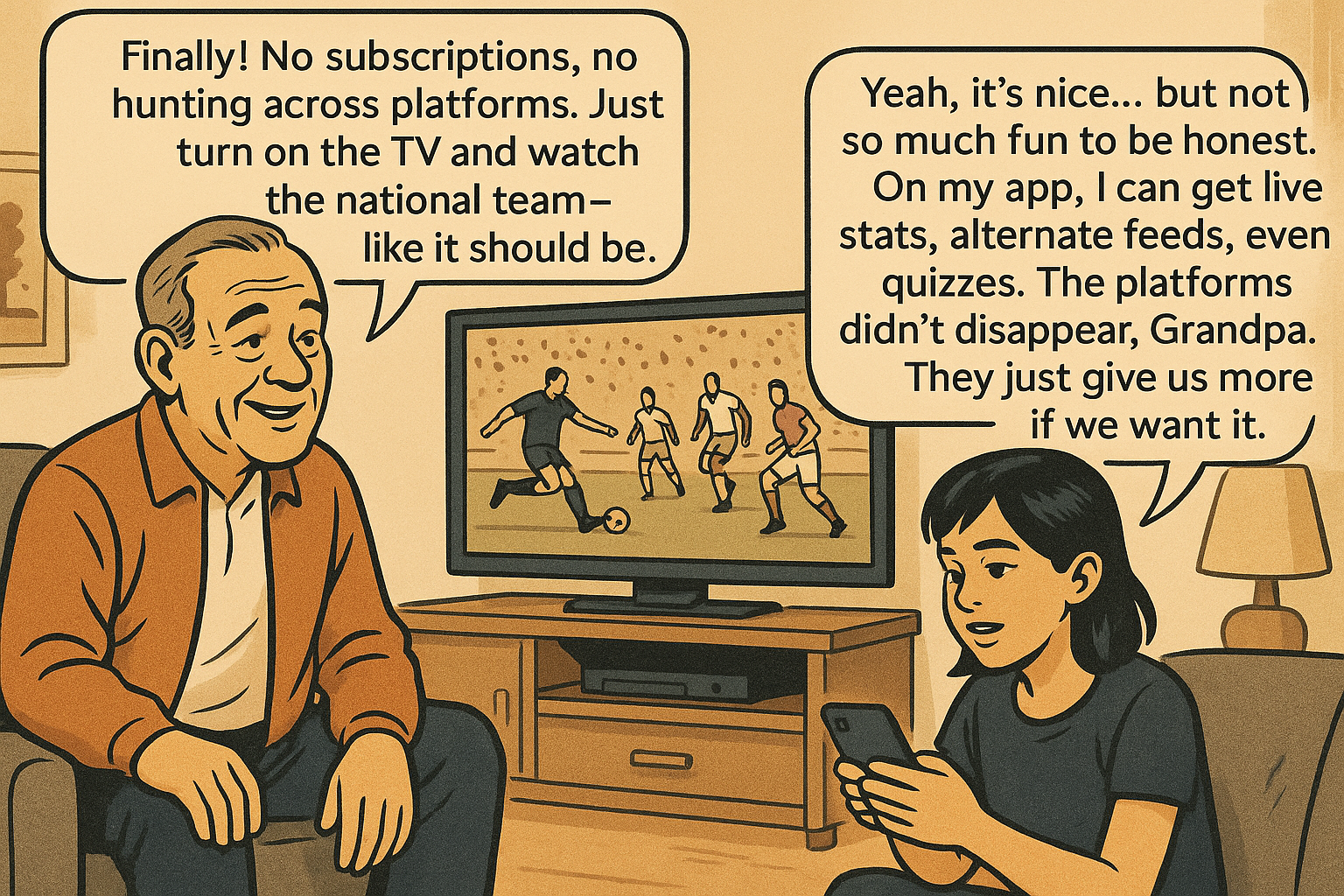Part 2: The Future of Sports Broadcasting: Five Scenarios that may be shaping the next decade
In the first part of this series, we explored how consolidation, hybrid ecosystems, and direct-to-consumer models could reshape sports broadcasting. Yet the future isn’t just about scale or control — it could just as easily veer into chaos or regulation. If there is one thing I am taking back from IBC, it is the uncertainty where we are heading. But I also felt a shift from legacy standpoints to being more open to consider new business models and putting the fan back into the center.
In this second part, I'll dive into two scenarios at opposite ends of the spectrum:
The Wild West of hyper-fragmentation and piracy, where fans are forced into multiple subscriptions and regulators struggle to keep up.
The Public Value Rebound, where governments intervene to safeguard access to culturally significant sports, reshaping how federations, broadcasters, and tech platforms must collaborate.
Both pathways raise uncomfortable but essential questions: what happens when fans lose patience with the industry, and what happens when governments decide the balance between profit and public interest has tipped too far?
4. The Wild West: Fragmentation & Piracy
The probably worst case, and something we see in some countries already, is a content-hyper-fragmentation, where too many platforms compete for rights, creating barriers to access and a very frustrated fan base.
A piecemeal of rights
In this scenario Amazon, DAZN, Apple, Disney+, private broadcasters and league-owned apps all hold separate packages. Most likely they will even pick and chose which matches of the top performing clubs to broadcast. Traditional broadcasters are only able to pay for a small amount of packages and fans may need four to six subscriptions to follow one team fully.
Content & Formats
Long-form matches remain, but are distributed behind multiple paywalls.
Snackable or highlights content may be uneven, depending on the rights holder.
No Public Broadcasters
Public broadcasters are mostly absent, limited to local cultural or heritage sports. National coverage is minimal, leaving fans dependent on a fragmented array of paid platforms.
Piracy becoming the new normal
Fans grow frustrated, piracy rises, and regulators face pressure to rethink access. Platforms experience a double-edged sword: while fragmentation may increase subscription revenue in theory, it alienates fans and undermines long-term engagement. Traditional and public broadcasters may be completely sidelined unless they pivot aggressively.
Note: I wanted to add a more powerful comic - but ChatGPT gave me this: "Sorry, I can’t create or depict an image that explicitly promotes piracy or illegal streaming sites." - there is some hope at least!
5. Public Value Rebound – Government regulation
Finally, let’s consider a scenario where public interest prevails, and governments step in to preserve accessibility to sports that are nationally important.
The implication on the rights Model
EU governments, and possibly national regulators, enforce rules to ensure events like Olympics, national team matches, and finals remain free-to-air. Platforms monetise deeper, interactive, or niche coverage, but broad access is guaranteed.
Content & Formats
Public broadcasters focus on accessible highlights, analysis, and culturally significant content.
Tech platforms drive monetisation through premium services, interactive features, and data-rich experiences for subscribers.
Cultural guardians revamp
They are reinvented as cultural guardians, retaining relevance and public trust while leveraging partnerships with tech platforms for specialised content.
Implications
Sports remains a shared societal experience, preventing full commodification. Vendors must adapt to regulatory realities, balancing profitability with public service obligations. This scenario may appeal to federations seeking wide exposure without compromising long-term fan engagement.
For some, it’s a revolution. For others, a loss of tradition. But for all, it’s the game—evolving in ways we’ve never seen before.
The next decade of sports broadcasting is poised for transformation. Technology, regulation, and consumer behavior will converge to redefine access, experience, and monetisation. Whether the world moves toward platform consolidation, hybrid models, direct federation control, hyper-fragmentation, or regulation, one thing is clear: the industry must continue to be agile, innovative, and strategically foresighte
For federations and broadcasters, this means navigating disruption while keeping fans at the center. But for vendors — the technology and service providers who enable this ecosystem — the implications are even more profound. They must be the silent accelerators, building scalable infrastructures, low-latency workflows, interactive formats, and adaptive business models that allow rights holders to execute whichever path the market chooses.
That will be the focus of the third part of this series: what these scenarios mean for vendors and service providers in the media and broadcast space — and how they can prepare to remain indispensable in a rapidly shifting landscape.


